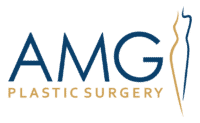Are you thinking about getting a contoured and slender Arm? Consider an Arm Lift.
Reducing Arm Flabbiness or Excess Skin
An arm lift, medically known as brachioplasty, is a cosmetic surgery designed to remove excess skin and fat from the upper arms, resulting in a more sculpted and aesthetically pleasing body image contour. This procedure can significantly enhance the sagging skin of the upper arm, especially after weight loss. It is an outpatient procedure done by plastic surgeons who are specially trained to perform Brachioplasty.
Who is brachioplasty surgery for?
Ideal candidates for an arm lift are individuals who are in generally good health, quit smoking, maintain a stable weight, and possess realistic expectations about what can be achieved.
Specifically, this is most beneficial for those who have been unable to tone their upper arms through exercise and diet alone and are looking for a more permanent solution to excess skin and fat.
Patients need to understand that while an arm lift can significantly improve the appearance of the arms, it does result in a scar along the inner arm.
However, for many, the trade-off of a scar for a more toned and defined upper arm contour is well worth it.
Is exercise a possible substitute for brachioplasty surgery?
While regular exercise and healthy weight are highly beneficial for overall health and can improve muscle tone, they might not always address excess skin resulting from significant weight loss or aging.
Exercise can certainly help reduce body fat and enhance the muscle definition of the upper arms, but it cannot tighten loose skin that has lost its elasticity. The hanging skin is left untreated.
In these instances, arm lift surgery becomes an effective solution to achieve the desired arm contour and remove excess skin.
However, individuals must engage in a consistent exercise routine post-surgery to maintain the procedure results and support overall well-being.
What are the risks of arm lift?
Like any cosmetic procedure, an arm lift (Brachioplasty) carries certain risks and potential complications that patients should discuss during their initial consultation with their healthcare provider.
Some of the common risks associated with an arm lift include infection, bleeding, and reactions to anesthesia. Additionally, there is an increased risk of unsatisfactory scarring, which might be more visible or extensive than expected, especially for those with previous surgeries having poor scarring.
Numbness or changes in skin sensation, asymmetry in the shape or position of the arms, and prolonged swelling are also possible.
In rare cases, more serious surgical complications, such as deep vein thrombosis or blood clots, can occur. To make an informed decision, it is crucial for individuals to discuss these risks thoroughly with their surgeon.
Is arm lift surgery painful?
Undergoing arm lift surgery involves discomfort during the postoperative recovery phase. The extent of pain experienced can vary from person to person, depending on individual pain tolerance and the complexity of the surgery performed. Pain and soreness around the incision sites are typically expected, especially within the first week following surgery.
However, this discomfort is generally manageable with prescribed pain medications and tends to decrease significantly as the healing process progresses.
The Surgery
An arm lift procedure is typically performed under general anesthesia and can take 1-3 hours, depending on the extent of extra skin and fat to be removed. After a local anesthetic injection, an incision is made along the inner upper arm, from the armpit to just above the elbow.
Excess skin and fat are then carefully excised, and the remaining skin is pulled taut and sutured into place. In some cases, liposuction may also be used to remove excess fat or add contouring to the arms.
Recovery
After an arm lift, patients typically experience discomfort and swelling, which can be managed with pain medication and compression garments. To minimize swelling, patients need to follow their surgeon’s post-operative instructions, including avoiding heavy lifting and strenuous exercise using the upper arm.
Full recovery can take several weeks, and during this time, it’s crucial to avoid strenuous activities that could strain the incision site and wear the compression garment.
Maximizing the Long-Term Benefits
Maximizing the long-term benefits of an arm lift procedure requires a commitment to a clean lifestyle and regular physical activity. Adopting a balanced diet that supports skin elasticity and muscle tone is crucial. Foods rich in vitamins, minerals, and proteins can enhance the body’s ability to heal and maintain the results of the surgery.
Furthermore, incorporating a consistent exercise routine that includes strength training and cardio can help maintain the improved arm contour.
How long does an arm lift last?
The results of an arm lift are long-lasting, but it’s important to note that the natural aging process can affect the appearance of the arms over time. Maintaining a healthy lifestyle and weight can help to prolong the effects of an arm lift.
Additionally, factors such as genetics and skin elasticity can also play a role in how long the results will last. It’s recommended to follow up with the plastic surgeon for regular check-ups and potential touch-up procedures if needed.
Conclusion
An arm lift, or brachioplasty procedure, is a safe and effective procedure that can improve the appearance and function of the upper arm.
It is important to select qualified plastic surgeons familiar with this body contouring procedure and thoroughly discuss expectations carefully and honestly.
If you are considering an arm lift, do not hesitate to schedule a consultation with Dr. Ghaznavi at AMG Plastic Surgery in Herndon and discuss your options. Remember, feeling confident in your skin is worth the investment. So go ahead and take the first step toward achieving beautifully contoured arms!



